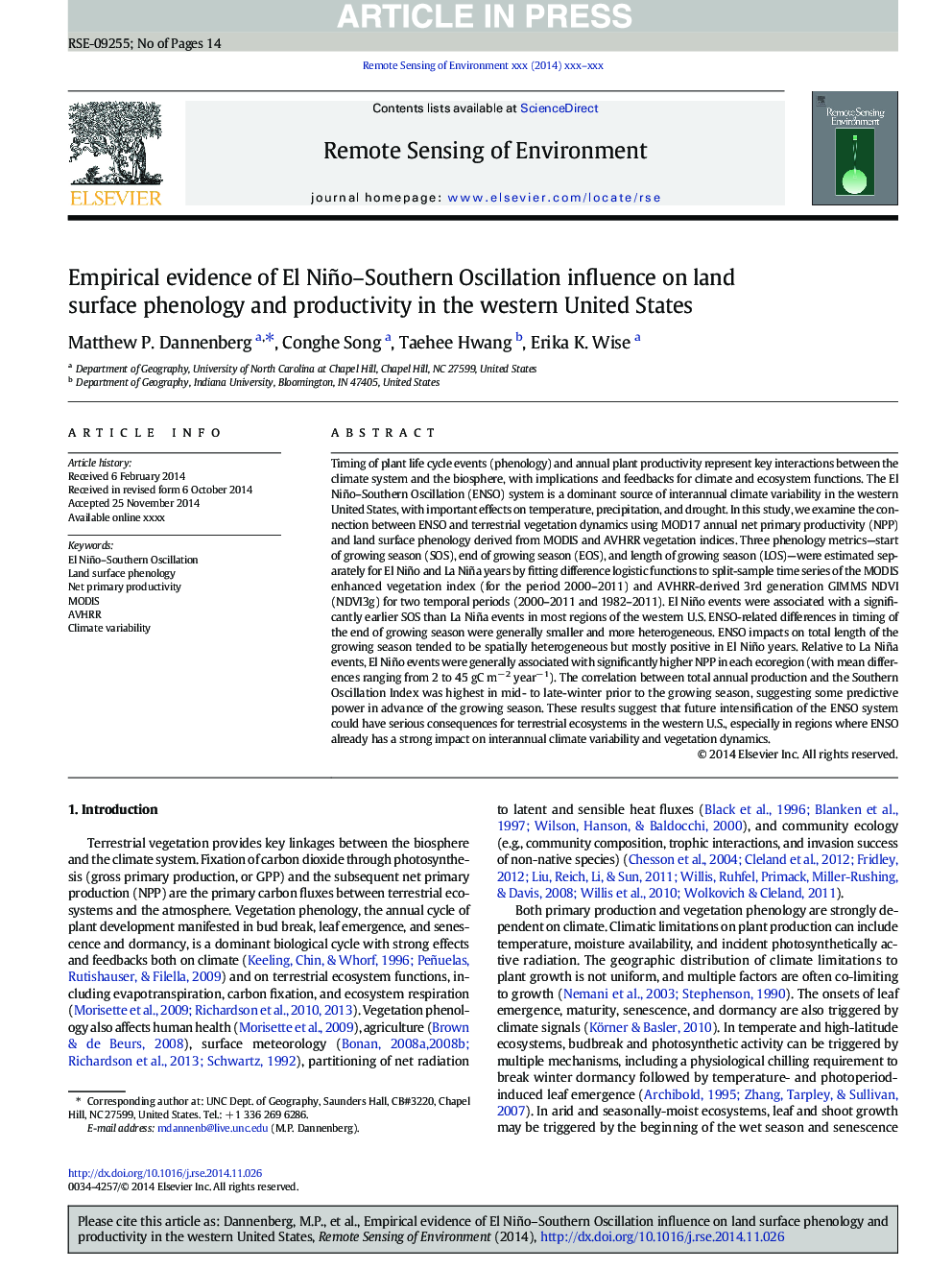| کد مقاله | کد نشریه | سال انتشار | مقاله انگلیسی | نسخه تمام متن |
|---|---|---|---|---|
| 6346179 | 1621241 | 2015 | 14 صفحه PDF | دانلود رایگان |
عنوان انگلیسی مقاله ISI
Empirical evidence of El Niño-Southern Oscillation influence on land surface phenology and productivity in the western United States
دانلود مقاله + سفارش ترجمه
دانلود مقاله ISI انگلیسی
رایگان برای ایرانیان
کلمات کلیدی
موضوعات مرتبط
مهندسی و علوم پایه
علوم زمین و سیارات
کامپیوتر در علوم زمین
پیش نمایش صفحه اول مقاله

چکیده انگلیسی
Timing of plant life cycle events (phenology) and annual plant productivity represent key interactions between the climate system and the biosphere, with implications and feedbacks for climate and ecosystem functions. The El Niño-Southern Oscillation (ENSO) system is a dominant source of interannual climate variability in the western United States, with important effects on temperature, precipitation, and drought. In this study, we examine the connection between ENSO and terrestrial vegetation dynamics using MOD17 annual net primary productivity (NPP) and land surface phenology derived from MODIS and AVHRR vegetation indices. Three phenology metrics-start of growing season (SOS), end of growing season (EOS), and length of growing season (LOS)-were estimated separately for El Niño and La Niña years by fitting difference logistic functions to split-sample time series of the MODIS enhanced vegetation index (for the period 2000-2011) and AVHRR-derived 3rd generation GIMMS NDVI (NDVI3g) for two temporal periods (2000-2011 and 1982-2011). El Niño events were associated with a significantly earlier SOS than La Niña events in most regions of the western U.S. ENSO-related differences in timing of the end of growing season were generally smaller and more heterogeneous. ENSO impacts on total length of the growing season tended to be spatially heterogeneous but mostly positive in El Niño years. Relative to La Niña events, El Niño events were generally associated with significantly higher NPP in each ecoregion (with mean differences ranging from 2 to 45 gC mâ 2 yearâ 1). The correlation between total annual production and the Southern Oscillation Index was highest in mid- to late-winter prior to the growing season, suggesting some predictive power in advance of the growing season. These results suggest that future intensification of the ENSO system could have serious consequences for terrestrial ecosystems in the western U.S., especially in regions where ENSO already has a strong impact on interannual climate variability and vegetation dynamics.
ناشر
Database: Elsevier - ScienceDirect (ساینس دایرکت)
Journal: Remote Sensing of Environment - Volume 159, 15 March 2015, Pages 167-180
Journal: Remote Sensing of Environment - Volume 159, 15 March 2015, Pages 167-180
نویسندگان
Matthew P. Dannenberg, Conghe Song, Taehee Hwang, Erika K. Wise,